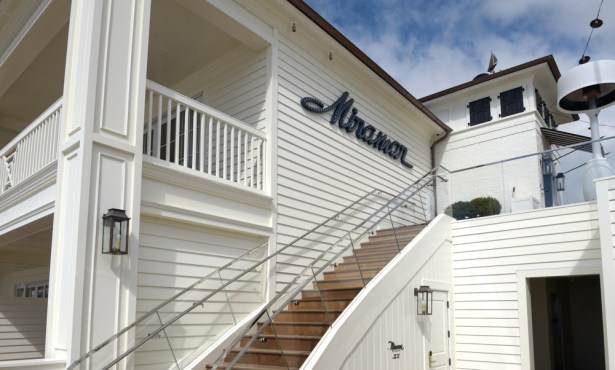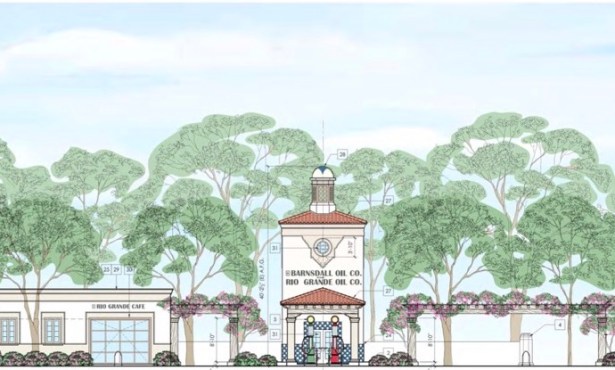Cut Down to Size
Tall Building Backlash Sparks Rhetorical Smackdown

What started with an audacious bang a few weeks ago as a plan to limit the allowable building height in downtown Santa Barbara by fully one-third ended with a whimper on the floor of the City Council chambers late Tuesday afternoon, capping a nearly three-hour debate over the scale and pace of growth. Rather than pass an amendment to the city’s charter-as first proposed-or an interim ordinance to reduce the height limit from its current maximum of 60 feet down to 40 throughout Santa Barbara-as more recently suggested-the council opted instead to convene a meeting of City Hall’s four main review boards and commissions to discuss the tools they already have to limit the size of new downtown buildings.
Whether that’s enough to satisfy supporters of the height restriction-a group that includes Citizens Planning Association, Allied Neighborhood Association, the League of Women Voters and a host activists hostile to density and so-called “smart growth”-remains to be seen. These groups could still collect the signatures needed to place such a measure on the ballot, as former city councilmember David Landecker noted.
What is abundantly clear, however, is the extent to which the spate of tall buildings recently approved or built has aggravated a raw political nerve in many activist circles. No less than 22 people spoke out in favor of the height restriction. But the same number also turned out to speak against it, and with equal passion. Superficially, the debate bore striking resemblance to many that roiled council proceedings in decades past: developers and their lobbyists versus neighborhood activists. The big difference this time is how developers claimed the environmental high ground, wrapping themselves in the rhetorical mantle of “sustainability.” (By concentrating development downtown, smart-growth advocates argue, the population densities necessary to sustain mass transit and wean drivers away from their cars is possible, thus reducing the pollution and congestion created by so many drive-alone motorists.) Nor did it hurt their case that Dave Davis of Community Environmental Council-and former the city’s planning czar-showed up to toot the sustainability horn. Bolstering it further, affordable housing advocates who warned that any height restriction would come at the expense of work force housing.
The plan was hatched by City Councilmember Brian Barnwell, Planning Commissioner Bendy White, and former commissioner and architect Bill Mahan. On the commission, Mahan was regarded a solid pro-development vote, but one animated by an abiding passion for protecting the Santa Barbara style and scale of architecture. Over the past two-and-a-half years, Mahan noted, Santa Barbara has seen a huge increase in the number of big building proposals. Nine big buildings went up in the 1920s, he said, another nine went up in the 40 year period beginning in the late 50s. But in the past five years, he said, Santa Barbara’s downtown has seen no less than 10 such projects. “People talk about sustainability,” Mahan said. “I say we need to worry about the historic sustainability of El Pueblo Viejo. It’s not infinite.”
Mahan’s numbers were amplified by Paul Casey, City Community Development Director. In recent years, Casey said five projects between 40 and 60 feet tall have been built downtown, with another four under construction. Two of them are the Chapala Street behemoths that have sparked much of the current concern. Another four have been approved, and 10 more are in the design review process.
Many of the architects, builders, real estate spokespeople, and affordable housing advocates who spoke against an interim ordinance-or any change in the city’s current height restriction-argued that the forum for such debates was the city’s sweeping general plan update process-scheduled to begin just next month. In her customary caustic style, affordable housing advocate Mickey Flacks charged those seeking a new height limit “were putting the cart before the horse and trying to go sideways.” While Santa Barbara’s quaint historical ambience and mountain views might be preserved, she argued developers would be more inclined to build multi-million dollar condos for affluent retirement age baby boomers from out of town and less likely to build desperately needed workforce housing for Santa Barbara’s workers But Planning Commission White-the strongest anti-development vote on the commission-expressed equally grave concern about the number of new tall building applications would be submitted in the two-to-three years it will take City Hall to ratify any changes in the General Plan.
By that time, White cautioned, the only space left to plan for will exist in the spaces between the new outcropping of supersized structures. Councilmember Barnwell-who approved many of the offending developments while serving on the planning commission-expressed skepticism that the general plan process would yield new guidelines with long enough teeth. He-like Mahan-acknowledged having voted for the very projects he now so publicly laments, but explained that planning commissioners-and members of other design review commissions-lack the clear rules and regulations needed to reject ambitious projects that intruded on Santa Barbara’s urban skyline. On that one point, Barnwell was joined by councilmember Das Williams-who otherwise worried that any further restriction on building height would backfire. But jumping into the fray, City Attorneys Steve Wiley commented, “I was always scratching my head at the process, where it always had to get to yes. We can say no to a project. The Planning Commission never thought it could say no.” Wiley argued that a charter amendment or even an interim ordinance would require significant environmental review to withstand the legal challenges they would inevitably incite. And that would consume valuable staff time.
Based on that, Councilmember Helene Schneider suggested instead the council might draft tighter “findings”-declarations of public benefit councilmembers and planning commissioner must make in granting developments discretionary approvals approving. Such findings might be used to exact greater public benefits from developers, such as more affordable housing, an idea for which several councilmembers expressed enthusiasm.
What difference that might make is unclear, however; two of the Chapala Street projects causing such a stink already are offering many more affordable units than city rules require. While such new and improved findings might eventually be in the works, that’s not what the council approved. Instead, councilmembers have ordered a mega meeting of the planning commission, the city council, the Historical Landmarks Committee and the Architectural Board of Review to discuss what tools already lie within their disposal to just say no.



